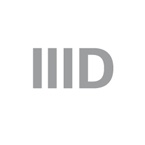
Information Design

The International Institute for Information Design (IIID) was founded to develop research and practice in optimizing information and information systems for knowledge transfer in everyday life, business, education and science.
The main concern of IIID is to contribute to a better understanding within the human community with respect to cultural and economic issues by means of improved visual and other forms of communication.
The aims of IIID are to be achieved by interdisciplinary and international co-operation. Thus IIID has established links to renowned universities, research laboratories and design companies.
As approved/confirmed by the IIID General Assemblies 1993 and 2000:
Information,
as defined by the idX group Ñis the result of processing, manipulating and organizing data in a way that adds to the knowledge of the person receiving itì.
Design
is the identifying of a problem and the intellectual creative effort of an originator, manifesting itself in drawings or plans which include schemes and specifications.
Accordingly, information design
is the defining, planning, and shaping of the contents of a message and the environments in which it is presented, with the intention to satisfy the information needs of the intended recipientsî, IIID definition modified by the idX group (see link from the IIID homepage: idX/information design exchange,
>> read more
The main concern of IIID is to contribute to a better understanding within the human community with respect to cultural and economic issues by means of improved visual and other forms of communication.
The aims of IIID are to be achieved by interdisciplinary and international co-operation. Thus IIID has established links to renowned universities, research laboratories and design companies.
As approved/confirmed by the IIID General Assemblies 1993 and 2000:
Information,
as defined by the idX group Ñis the result of processing, manipulating and organizing data in a way that adds to the knowledge of the person receiving itì.
Design
is the identifying of a problem and the intellectual creative effort of an originator, manifesting itself in drawings or plans which include schemes and specifications.
Accordingly, information design
is the defining, planning, and shaping of the contents of a message and the environments in which it is presented, with the intention to satisfy the information needs of the intended recipientsî, IIID definition modified by the idX group (see link from the IIID homepage: idX/information design exchange,
>> read more

Ö
Otto Neurath and Marie Reidemeister Timeline

an overview on the lives of Otto Neurath and Marie Reidemeister, their on the Vienna Method, the founding of Isotype, their way to England, their work on a glance
Thanks to Sue Perks for kindly contributing the essential data.
>> Download the timeline as PDFÖ
Thanks to Sue Perks for kindly contributing the essential data.
>> Download the timeline as PDFÖ
Data transformed into high-quality information
empower people to attain goals
Peter Simlinger, IIID Director,
in tribute to Otto Neurath, R. S. Wurman and Prof Jill Dacey
†
†
†
†
ìDataî
is not only bits and bytes but all sorts of signals disregarded by intended or unintended addressees. ìtransformedî = ìbrought into (meaningful) shapeî by a ìtransformerî. The term ìtransformerî was used by Otto Neurath as a label for the function of someone capable of understanding the data, able to get all necessary information of theme-related experts, deciding what is worth transmitting and making it all understandable .
†
†
ìhigh-quality informationî:
information, as defined by the idX* group ìis the result of processing, manipulating and organizing data in a way that adds to the knowledge of the person receiving itî. The attributes of high-quality information are **: accessibility, appropriateness, attractiveness, credibility, completeness, conciseness, errorless, interpretability, objectiveness, relevance, timeliness, secure, understandable, valuable.
ìto empowerî/ ìempowermentî,
a term referred to by R.S. Wurman in his book Information Anxiety 2 (p. 191) as ìthe word of the new centuryî and the result of inspired instructions.
ìpeopleî
are those individuals who are expected to understand and make use of provided high-quality information for empowerment. There is a difference between transforming data for people and the transforming of data for other purposes, e.g. the automatic control of computers, machines, robots etc.
ìattaining goalsî
= to accomplish something which otherwise would not have been able to be achieved. Neglecting the purpose underlying peopleís interest in specific information can have the effect that the transformed data do not satisfy the information needs of the intended recipients.
It goes without saying that transforming data into high-quality information to empower people to attain goals requires the competence of experienced information designers. For a description of what information designers know and can do; see link from the IIID homepage: idX/information design exchange,
in tribute to Otto Neurath, R. S. Wurman and Prof Jill Dacey
†
†
†
†
ìDataî
is not only bits and bytes but all sorts of signals disregarded by intended or unintended addressees. ìtransformedî = ìbrought into (meaningful) shapeî by a ìtransformerî. The term ìtransformerî was used by Otto Neurath as a label for the function of someone capable of understanding the data, able to get all necessary information of theme-related experts, deciding what is worth transmitting and making it all understandable .
†
†
ìhigh-quality informationî:
information, as defined by the idX* group ìis the result of processing, manipulating and organizing data in a way that adds to the knowledge of the person receiving itî. The attributes of high-quality information are **: accessibility, appropriateness, attractiveness, credibility, completeness, conciseness, errorless, interpretability, objectiveness, relevance, timeliness, secure, understandable, valuable.
ìto empowerî/ ìempowermentî,
a term referred to by R.S. Wurman in his book Information Anxiety 2 (p. 191) as ìthe word of the new centuryî and the result of inspired instructions.
ìpeopleî
are those individuals who are expected to understand and make use of provided high-quality information for empowerment. There is a difference between transforming data for people and the transforming of data for other purposes, e.g. the automatic control of computers, machines, robots etc.
ìattaining goalsî
= to accomplish something which otherwise would not have been able to be achieved. Neglecting the purpose underlying peopleís interest in specific information can have the effect that the transformed data do not satisfy the information needs of the intended recipients.
It goes without saying that transforming data into high-quality information to empower people to attain goals requires the competence of experienced information designers. For a description of what information designers know and can do; see link from the IIID homepage: idX/information design exchange,
The qualities required of Information Designers
As approved/confirmed by the IIID General Assemblies 1993 and 2000:
To design professionally information designers should
1.
be able to think both innovatively and systematically,
2.
be as well informed as is necessary about the subject area they are working in,
3.
be knowledgeable about both the communicative features of the components of visual messages and their interrelationships,
4.
know the relevant customs, conventions, standards, regulations and their underlying theories,
5.
be familiar with the technical requirements of the communications media, specifically visual ones,
6.
be familiar with human communication capabilities with regard to perceiving, cognitive processing and responding to information using all senses,
7.
be able to consider the possible benefits of the communicated information to the users,
8.
be knowledgable about the creation of pictures and text, static and animated, as well as information other than visual, for the facilitation of task related activities and how they can be balanced to achieve optimal effects,
9.
be able to design information in a formal interesting and attractive way to conjure attention highly adequate to the communicative purpose of the message,
10.
understand to make information and information systems interactive in such a way that adjustments governed by changing requirements can be made, should this be desirable to safeguard the continuing use of the information,
11.
be able to communicate effecively in both their mother tongue and English,
12.
understand the capabilities of support sciences - such as cognitive psychology, linguistics, social and political sciences, computer science, statistics - and be able to co-operate with specialists to evaluate and improve the design of messages with due regard of different cultural sensitivities of the users,
13.
have a detailed knowledge of the cost factors relating to the various design stages and their implementation,
14.
render their services in a format that corresponds both with the value they represent to the clients and the conventions required by them,
15.
behave in a responsible manner with regard to the needs of the target users and society as a whole.
To design professionally information designers should
1.
be able to think both innovatively and systematically,
2.
be as well informed as is necessary about the subject area they are working in,
3.
be knowledgeable about both the communicative features of the components of visual messages and their interrelationships,
4.
know the relevant customs, conventions, standards, regulations and their underlying theories,
5.
be familiar with the technical requirements of the communications media, specifically visual ones,
6.
be familiar with human communication capabilities with regard to perceiving, cognitive processing and responding to information using all senses,
7.
be able to consider the possible benefits of the communicated information to the users,
8.
be knowledgable about the creation of pictures and text, static and animated, as well as information other than visual, for the facilitation of task related activities and how they can be balanced to achieve optimal effects,
9.
be able to design information in a formal interesting and attractive way to conjure attention highly adequate to the communicative purpose of the message,
10.
understand to make information and information systems interactive in such a way that adjustments governed by changing requirements can be made, should this be desirable to safeguard the continuing use of the information,
11.
be able to communicate effecively in both their mother tongue and English,
12.
understand the capabilities of support sciences - such as cognitive psychology, linguistics, social and political sciences, computer science, statistics - and be able to co-operate with specialists to evaluate and improve the design of messages with due regard of different cultural sensitivities of the users,
13.
have a detailed knowledge of the cost factors relating to the various design stages and their implementation,
14.
render their services in a format that corresponds both with the value they represent to the clients and the conventions required by them,
15.
behave in a responsible manner with regard to the needs of the target users and society as a whole.
What's the difference between an information designer and a graphic designer?
Information designers may have a graphic design background, but they are interested in understanding more than just style. They are particularly concerned with the ease with which information can be accessed and understood by the user. They are likely to want to involve some kind of user evaluation in their working method.(Sue Walker)
How can I measure the benefits of information design?
It depends on the kind of design problem. Some benefits are easily measurable: if a form is easy to understand and to fill in, an organisation is likely to receive fewer phone calls or bad applications. Business process analysis should reveal places where measurement will be useful. Much good information design is not noticed: from the user's perspective it is transparent - it does not get in the way of them finding out what they need to know or do so they don't comment on it directly.(Sue Walker)

Enjoy your Espresso to Information Design
This little booklet is a teaser to this discipline, without any claim on a academic approach or completeness.
But maybe a compilation of useful principles, methods and tools ñ out of experience, as a starting point for further explorations and discoveries.
As well as may others …
>> more to read here at issuu …
But maybe a compilation of useful principles, methods and tools ñ out of experience, as a starting point for further explorations and discoveries.
As well as may others …
>> more to read here at issuu …

